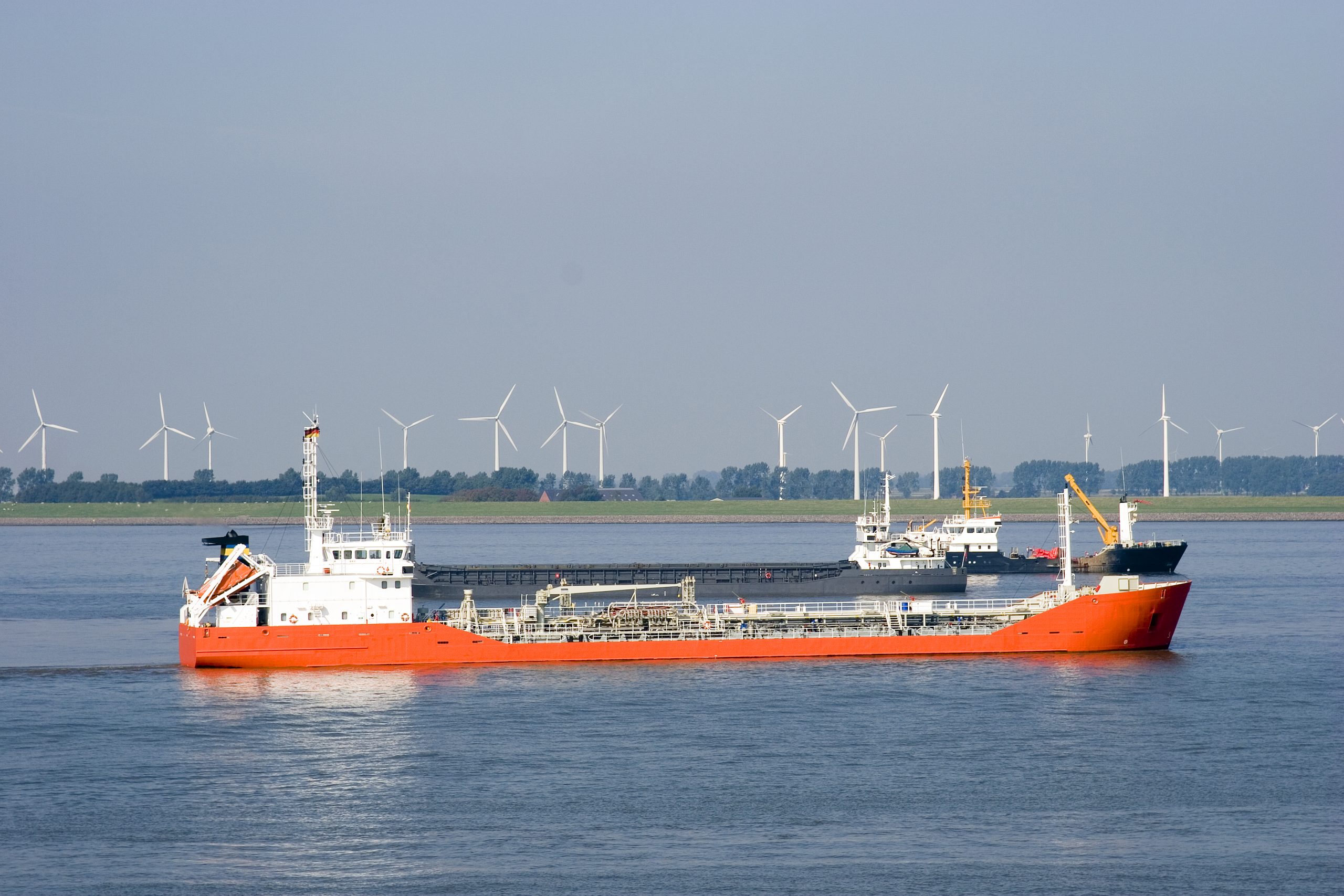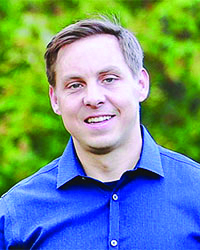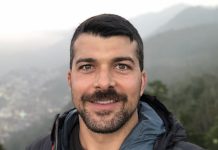What is your background in providing care and guidance to remote industrial areas?
I’m a board-certified emergency room physician. I still practice clinically, and I’ve been with Remote Medical International since 2017. My initial job with the company was as the topside physician. I was the physician that our providers in a remote location would call in to discuss a case. I did that for probably two solid years. I still do that occasionally now, and I became really comfortable talking with providers in industrial, construction, offshore locations, and really remote and challenging environments with limited communications, resources, and management options.
We became very good at handling cases without a lot of the backup resources that I would have had working in an emergency department. Having done that for several years, I am pretty comfortable with understanding clinical limitations, as well as operational impact, managing cases in those environments, and deciding when to evacuate somebody. I also have experience in preparing our medical providers to go out and operate in those types of remote environments.
How’s the COVID-19 pandemic forced a change in established safety measures?
I think it’s forced almost everything to change.
There is a significant amount of preparedness that has to happen for somebody to remain operationally stable or for an operation or a project to actually happen. There are quite a number of enhanced measures that have to be put into place to allow that to happen successfully. We witnessed many aspects of normal operations being shut down early during the pandemic and continuing for some time.
We had to learn different ways to adapt our strategies to maintain operational function and stability, knowing how COVID-19 could potentially impact operations. This took different forms such as enhanced safety measures — whereby a lot of clients would look at their operation and design a protocol or an approach that would mitigate the risk as much as possible.
And that’s really what this became — a risk mitigation effort for a lot of industries. You’d have key stakeholders from the client or from the company, you’d get some medical guidance and input and safety guidance, and you would design a system that would mitigate as much risk as possible. This involved many different things in the beginning. Everybody talked about hand hygiene; they talked about social distancing, and they talked about masking. These are now essential elements of any approach.

And, to the extent that it was operationally possible, efforts were put into place within the industry and on projects to enhance those precautions. These include requiring masking where possible, encouraging and enforcing social distancing, improving hand hygiene, or changing shift scheduling accordingly to minimize the number of people working. It remains critical that people who are essential to a given project are able to function with as much distancing as possible and with as much support as they need to do their job in the safest manner possible.
There are other measures as well. We want to have a project be as successful as possible and minimize the chance that it would be shut down because of a widespread COVID-19 outbreak. We put a significant effort into screening personnel who are going out to work remotely. That takes different forms. For example, if people are traveling on to a site, in general, a version of quarantine is required before they are able to mobilize.
We screen and conduct temperature checks throughout the quarantine period. Do you have any signs or symptoms consistent with COVID-19? And if so, how did you report? Who did you report to? When?
These are typical. But then we also layer in different testing strategies within the screening process. For example, we would incorporate PCR tests at a certain point in time during quarantine or prior to deploying to go offshore or to a remote location in order to further minimize the risk. This carried on to the project site as well, whereby people often may have to screen before they begin work. Additionally, measures were put in place to identify somebody who might be sick at work along with the preparedness protocols that address what to do if someone is sick.
Much of this preparedness stemmed from: We’re going to put somebody out there. We’ve got our enhanced safety measures in place. We’re going to screen them. We’re going to test them. We’re going to educate them as much as possible. But now we have to plan for the possibility that COVID-19 does affect our project site.
The contingency planning had to be in place whereby you identify an individual that could be sick, identify any close contacts to that individual, then isolate those individuals to potentially prevent infecting the entire workforce and shutting down the operation. That’s what we try to drive home. It takes a multifaceted approach to maximizing health and safety, while minimizing the risk of COVID-19 shutting down an operation.
Can you speak about how the wind industry has handled the COVID-19 pandemic?
Recently, Remote Medical International acquired SSI, an organization that has a lot of experience working with wind in a number of different settings. From what we’ve seen, I would say that wind is very similar to a lot of other industries in terms of how they’re managing COVID-19.
Wind workers are in a particularly challenging and remote environment just because of the complexity of what it is they’re doing. But then you add in these enhanced safety measures where you’re trying to make sure that when somebody goes out to work on a project that they’re as safe as possible.
So, you get into screening, testing, enhanced preparedness options, and enhanced safety measures as I’ve mentioned.
In terms of actually managing somebody, you have to consider the particularly challenging environment involved with wind farms. Then we layer in these added approaches for identifying somebody with possible symptoms onsite and if that could possibly infect a whole bunch of people and shut down the operation. It’s mirroring the approaches a lot of different industries — whether it’s seabed exploration, oil and gas, pipelines, etc. — they are all taking steps to minimize the impact of COVID-19 affecting their project.
A wind technician’s job can be a solitary one, and sometimes they’re the only ones out there at any given time. Does that mean they tend to be safer in this situation?
I would say absolutely although they are never working alone and as a minimum work in pairs. COVID-19 is a viral illness. Obviously, that’s a very challenging sort of environment to operate in any way. But in environments where there is a greater degree of isolation, the fewer people working together in general, the safer that environment is with respect to spreading a viral illness. Think of welders who are right next to each other in a closed space with a group of people side by side. Obviously the risk of spreading an illness is much greater given the proximity to other individuals that could have an illness.
By nature, with that kind of isolation for some workers on wind farms, the separation is an added benefit of being able to work in those environments.
Have there been any extra safety measures put in place to help the wind industry deal with the pandemic?
The approach is not significantly different. It’s all of these other measures that we put into place being adapted to a different project site. We know it’s a remote environment. But we still want to make sure we are minimizing the risk as much as possible, so when somebody goes off site into that location, we want to know if they have signs or symptoms consistent with COVID-19, or if they’ve been recently exposed to somebody with COVID-19.
Now, there are some logistical challenges given just the type of work that’s happening when you’ve got a wind farm that stretches over many square miles, so it’s obviously operationally challenging to get somebody who is sick to a first aid station.
We select medics who have the clinical and operational experience of working in these environments. In addition, we want them to be able to recognize somebody who is sick with signs and symptoms of COVID-19 and get them safely — and safely means wearing all appropriate PPE, masking the potentially sick individual as well if practical — moving them to that first aid station. There, they can have a more detailed examination to determine the level of COVID-19 symptoms and then appropriate management decisions can be made.
COVID-19 isn’t a type of illness whereby somebody suddenly becomes acutely ill. It’s not a catastrophic illness upfront. It is a slow, progressive illness over time that usually displays symptoms over seven to 10 days, so if somebody is going to get really sick, that’s when they get really sick. Our job is less geared toward managing that really sick person, but rather in identifying somebody in a remote environment that could have symptoms and getting that person the medical care they need or preventing them from getting sick in that challenging environment. But also, a primary goal is to protect the rest of the workforce operating there.
Perhaps someone has mild symptoms, and they’re a wind technician, and they’re 100 meters up in the air, and then they start to get dizzy. What happens when a technician doesn’t think he’s a risk because he’s working alone, and symptoms put him in possible danger?
You’re right. You’ve seen the laundry list of symptoms. It could be anything — headache, coughing, runny nose, nausea, vomiting, loss of taste or smell, to more significant stroke-like symptoms, blood clots, respiratory failure, or organ damage. We don’t take any chances. If we’re worried that somebody has any signs or symptoms consistent with COVID-19, regardless of the relative isolation of that individual, we need to move that person. I don’t like to make a decision that’s going to have a significant operational impact, but regardless of that operational impact, at the end of the day, we have to do what’s right for that person.
And we have to value the health and safety of that person, so we’re making decisions that we feel are based in evidence and are best for that individual. We want to make sure wind technicians can work; this is their livelihood. They want to be out there, and they have minor symptoms, or they have a little cough. It’s just not a chance that we can take. We make those decisions understanding the potential impact to the rest of the project, even with the relative isolation, but also the safety of that individual working at height in a very complex environment.
Do you see industrial complexes such as wind returning to a status quo after COVID-19, or do you see all these increased measures becoming the new normal for the future?
That’s a great question. It’s a little bit of trying to predict the future, because there are a lot of unknowns. We have several COVID-19 vaccines starting to be used, but this is not going to be a switch. This is a tremendous accomplishment to create safe and effective vaccines in the timeframe that we’ve done this, as well as to deploy this over a global population in the timeframe we’re looking to do it. But there are a lot of questions that remain in terms of: Is this going to be a seasonal issue whereby we need to get boosters every year? Is this going to be something where we get enough people vaccinated, where we’re going to have herd immunity? Will the virus not mutate? Will it go away after about a year?
A lot of questions remain unanswered today. The vaccine is going to be used in a targeted, phased-out approach where it will go to help essential workers and people who need it most first. I think this will include workers in critical infrastructure, but this will depend on region. A lot of that still remains to be seen in terms of how and when they get vaccinated.
But even when that happens, not everybody in the world is going to be vaccinated. It’s going to require a slow, phased approach in order to get enough people across the globe vaccinated, to develop herd immunity. The best-case scenario is that COVID-19 just dies out as you get that herd immunity. But again, it’s not going to be a switch. This is going to be a prolonged process — at least over the next year would be my opinion. So, these enhanced safety measures are still going to be critical. You’re still going to need to identify somebody who has signs and symptoms.
You’re going to want to manage them appropriately, protect the rest of your workforce, and include all the enhanced safety measures we spoke about. But I do think over time, when we see the evidence behind this and the kind of natural cycle of COVID-19 with vaccinations, that in the future, it may change. Some of the measures such as enhanced hand hygiene and maintaining some degree of distance are probably going to last a long while before they change.
And the psychological impact is going to be around for a long while. Much of it is going to be ingrained in us. We are going to naturally carry that into our environments. Like now, instead of coughing and sneezing into our hands, we’re going to do it into our arms. We are going to wash our hands a lot more often and more thoroughly than we would have before. And we’re going to be much more aware of illness in general, because we’re going to be afraid of the next COVID-19, the next pandemic.
More info www.remotemedical.com































